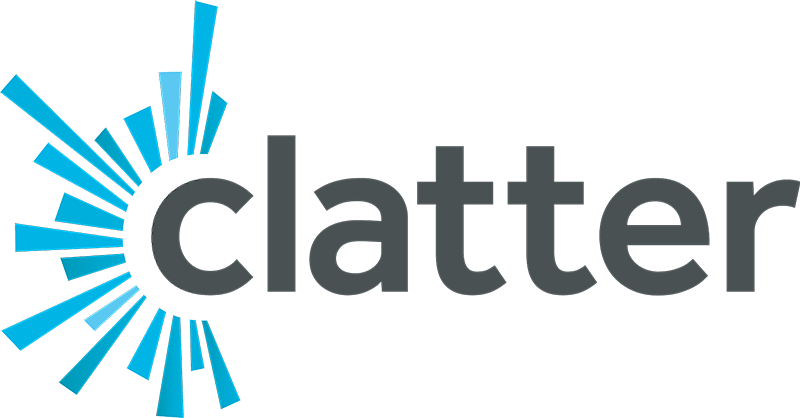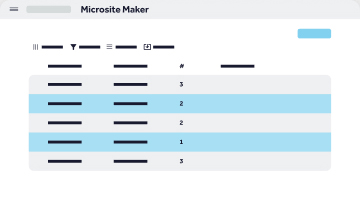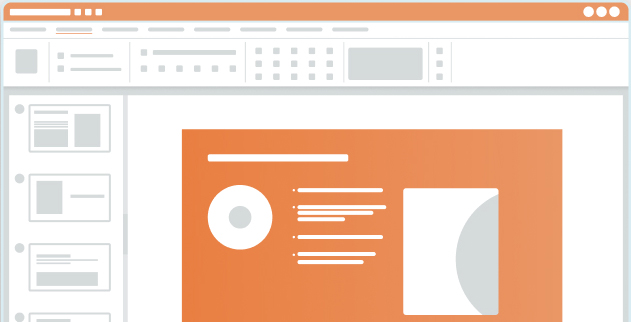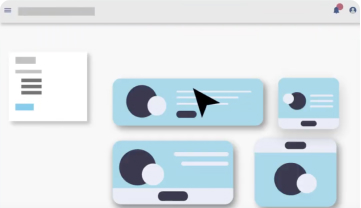When enterprise marketing teams invest in report automation tools, they’re usually solving one problem: eliminating manual data entry and keeping performance dashboards up-to-date. And that’s valuable work – marketers save an average of 25 hours per week using automation, according to research from Zapier.
But here’s what’s interesting: while these teams have successfully automated their internal reporting, sellers in organizations without report automation spend an average of 10 hours per week searching for and updating sales and marketing materials. They’re still manually rebuilding the same sales presentation for different prospects. Every week. Sometimes multiple times per day.
What if report automation could solve both problems? What if the same principles that eliminate manual analytics reporting – templates, automation, self-service – could also eliminate the endless cycle of customizing sales collateral?
Report automation tools aren’t just for tracking your performance. They can also automate the creation and customization of the customer-facing content your sales team needs to close deals.
How Most Teams Use Report Automation Tools Today
When most people think about report automation, they picture a specific set of capabilities: pulling data from multiple marketing and sales platforms automatically, creating dashboards that visualize KPIs and performance metrics, generating client reports that update without manual data entry, and building analytics presentations with real-time chart updates.
This is the traditional use case for report automation tools, and it creates tremendous value. Report automation saves 6-8 hours per week per report by eliminating manual data extraction and processing. Nearly 60% of workers estimate they could save six or more hours a week if repetitive aspects of their jobs were automated.
Beyond time savings, these tools reduce human error in reporting, ensure stakeholders always have access to current data, and free analysts to focus on insights rather than spreadsheet work. This is exactly what report automation tools were designed to do, and they do it incredibly well. Companies that have implemented these tools for analytics reporting have seen massive efficiency gains.
But while most teams stop there, there’s actually a second category of “reporting” that happens in enterprise marketing departments – one that consumes even more time and creates just as much friction.
The Other Kind of Reports Your Team Creates
Every customized sales presentation is a report. Think about it: you’re pulling information from a central library (your approved content), assembling it for a specific audience (the prospect), and delivering it in a standardized format (your branded template). That’s reporting – it just doesn’t look like a dashboard.
The scope of this work is enormous. Marketing teams are constantly creating sales presentations customized for specific industries or verticals, prospect proposals tailored to company size or use cases, customer-facing collateral modified for different buyer personas, competitive battle cards updated based on which competitor is in the deal, case studies reformatted for different formats, and product sheets adjusted for different feature sets or packages.
The current process looks something like this: A sales rep identifies the need for customized content and sends a request to marketing via email or Slack. Marketing manually rebuilds the deck or collateral from scratch, or heavily edits an existing version. A review cycle ensures brand compliance and message accuracy. The final version gets delivered to sales – sometimes days later. Then the entire process repeats for the next prospect.
The cost of this manual approach is significant. According to research compiled by Mediafly, 65% of sales content goes unused because reps can’t find it or perceive it as low value. Sixty-five percent of sales reps can’t locate meaningful content to share with buyers, making it the most common complaint among US sales teams. And sales representatives need more than 17 pieces of content to facilitate the entire sales process.
Picture this: It’s 3pm on a Thursday. You’re finally making progress on that competitive analysis project when Slack pings. It’s Sarah from Sales. “Quick question – can you swap out the manufacturing case studies in the main deck with financial services ones? Prospect meeting is tomorrow morning.” You know this “quick” request will take 90 minutes. You know you’ve done this exact customization four times this month. And you know that tomorrow, someone else will ask for the healthcare version.
These teams have automated one kind of reporting (analytics) while manually handling another kind of reporting (customer-facing content). But both could be automated.
Why the Same Automation Principles Apply to Sales Collateral
When you look at analytics reporting and sales collateral customization side-by-side, they follow remarkably similar patterns.
Analytics reporting pulls data from central sources like CRM and analytics platforms, applies consistent calculations and formatting, outputs to standardized dashboard templates, allows self-service access for stakeholders, and updates automatically or on-demand.
Sales collateral customization does essentially the same thing, just with different inputs and outputs. It pulls content from central libraries of approved slides and case studies, applies consistent branding and messaging, outputs to standardized presentation templates, could allow self-service access for sales teams, and could update automatically when source content changes.
And here’s why this matters: buyers expect it. According to Adobe and Forrester research, 72% of B2B customers expect fully or mostly personalized content when engaging with a product or service. McKinsey found that 71% of B2B buyers expect personalized interactions and become frustrated when these expectations are not met.
The only difference between analytics automation and content automation is what’s being automated. One pulls from data sources, the other pulls from content sources. One outputs charts, the other outputs slides. But the underlying principle – enabling teams to create standardized, on-brand outputs quickly and consistently – is exactly the same.
If your team has already embraced automation for analytics reporting, you’ve already proven the value of the approach. The question is: why stop at dashboards?
What Report Automation for Sales Collateral Actually Looks Like
Just like report automation tools create a self-service layer between data sources and stakeholders, content automation creates a self-service layer between your approved content library and your sales team.
This approach has four key components:
Central Content Library (Like Your Data Warehouse). All approved presentations, slides, case studies, and collateral live in one place, maintained and updated by marketing to ensure accuracy. Content is organized by industry, use case, buyer persona, or funnel stage, with version control so updates propagate automatically across all uses.
Template-Based Assembly (Like Dashboard Builders). Pre-built presentation and collateral templates provide the structure, while drag-and-drop interfaces let non-technical users customize without needing design skills. Brand guardrails ensure consistency, and modular components can be mixed and matched based on the prospect’s needs.
Self-Service Customization (Like Self-Service Analytics). Sales teams can create customer-specific versions themselves through point-and-click customization, without needing design or marketing resources. Filters and parameters – industry, company size, use case – determine which content appears, and output formats match your brand standards automatically.
Automated Updates (Like Scheduled Report Refreshes). When marketing updates a case study or product description, it updates everywhere it’s used. No more hunting down outdated versions across dozens of customized decks. Sales always works from current, approved content.
According to Seismic’s research, organizations using enablement tools save 13 hours each week compared to those without them. Sales can create customized, on-brand presentations in minutes instead of waiting days for marketing. Marketing maintains control over messaging while eliminating the bottleneck. Everyone wins.
The Combined Power of Automating Both Types of Reporting
Companies that automate both types of reporting – internal analytics and customer-facing collateral – unlock compounding benefits that transform how marketing and sales teams operate.
For marketing teams, the impact is dramatic. They save time on both data reporting and content customization, freeing up 200+ hours per person annually when combining both types of automation. This allows them to shift from reactive order-taking to proactive strategy, maintain brand and message consistency across all outputs, and scale content operations without scaling headcount.
For sales teams, automation means self-service access to both performance data and customized collateral. Deal velocity increases because reps aren’t waiting on marketing for customizations. They can deliver the relevant, personalized content that 72% of B2B customers expect. And they’re always working with current, accurate information – no more accidentally using outdated case studies or product specs.
For the organization as a whole, the benefits extend even further. Customers experience consistency from analytics to sales materials. Resources are allocated more effectively across marketing and sales. And the company gains a competitive advantage through speed and personalization that competitors still handling everything manually simply can’t match.
One global healthcare company calculated they were spending over 600 marketing hours per year on just one type of recurring collateral request. By implementing content automation, they reclaimed that time and redirected it toward high-value strategic initiatives that actually moved the needle on revenue.
Ready to Automate Both?
Report automation tools have already proven their value for analytics and performance tracking. Companies have seen the time savings, the accuracy improvements, and the strategic benefits of freeing their teams from manual reporting tasks.
But the same automation principles – templates, self-service, centralized sources, and consistent outputs – work just as well for sales collateral and customer-facing content. The need is just as urgent, the time savings are just as real, and the business impact is just as significant.
If your marketing team has already automated analytics reporting, you’re halfway there. You understand the value of automation and you’ve built the organizational muscle to implement it. You’ve proven that your team can adopt new tools and change workflows when the ROI is clear.
Now it’s time to extend that same thinking to the other kind of reporting your team does every day. The kind where sales asks for “just a quick customization” and you lose 90 minutes. The kind where you’re manually rebuilding decks instead of building a strategy. The kind where both marketing and sales are frustrated because the process is too slow and the content isn’t personalized enough.
Your team has already automated the reports about your work. Now automate the work itself. You can get started by getting in touch with our team by clicking here.



